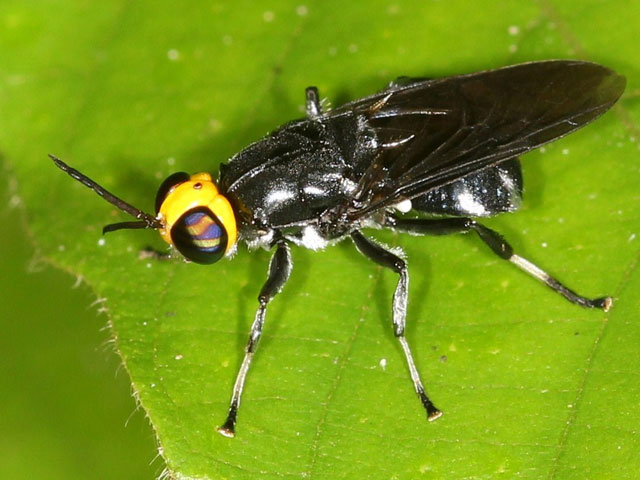Thread subject: Diptera.info :: French Guianan bombylid
Posted by ChrisR on 09-10-2011 18:41
#1
This is a French Guianan bombylid photographed by Stephane Brule - can it be identified? :)
Edited by ChrisR on 09-10-2011 18:42
Posted by paqui on 19-10-2011 22:15
#2
Oh itīs amazing! I hope anyone can identify it, just a few "lost steps" looking drawings of books
- the most similiar wing at Palaearctic seems Exoprosopa pectoralis, it has yellow face
but black frons :( (Engel, 1938)
- another similar wing pattern: Diatropomma, related to Isomyia but both have a narrow wing base and are Etiopian :(( ("Exoprosopinae", Hull, 1973)
- at bugguide:
http://bugguide.n...96/bgimage
- page 159, figure "f" Poecilanthrax
http://redalyc.ua...523111.pdf
- "nearest" ones in keys for eastern (US) are Exoprosopa and Dipalta
Could "Exoprosopini" be said at least? :(
regards :)
Edited by paqui on 19-10-2011 22:18
Posted by nealevenhuis on 20-10-2011 07:18
#3
This is Hyperalonia morio ssp. erythrocephala (Fabricius). Great shot!
-Neal
Posted by Menno Reemer on 20-10-2011 09:09
#4
There are several taxa of Neotropical Stratiomyidae with similar colouration. Does anyone know whether this is mimicry of some kind, and which could be the supposed models? I cannot remember having seen stinging aculeates in S-America with such colours...
Posted by ChrisR on 20-10-2011 09:19
#5
nealevenhuis wrote:
This is Hyperalonia morio ssp. erythrocephala (Fabricius). Great shot!
-Neal
Many thanks Neal - all credit for the photo goes to Stephane Brule in French Guiana :)
As Menno says, the coloration (with the bluish ground colour and yellow head) does remind me of a few of those stratiomyids that are common in the same region -
Cyphomyia? Here is another of Stephane's photos (of
Cyphomyia):

Edited by ChrisR on 20-10-2011 09:24
Posted by Menno Reemer on 20-10-2011 09:37
#6
Yes, those are the ones I mean. And if I remember correctly there is also another (unrelated?) stratiomyid genus looking like this.
Of course there doesn't need to be an aculeate model: if one or more of these flies just taste very bad, they may also benefit from looking like each other (Mullerian mimicry or a combination of different types of mimicry...)
Posted by paqui on 27-10-2011 20:41
#7
oh thanks for that id :)
regards everyone
